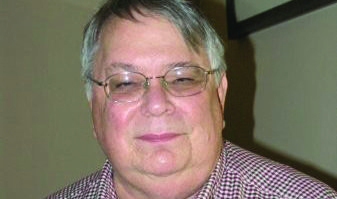 I read with interest the debate over the KDKA centenary. I appreciate that many individuals and organizations were involved in the origins of what we now know as broadcasting. But I feel that a few important facts have been overlooked.
I read with interest the debate over the KDKA centenary. I appreciate that many individuals and organizations were involved in the origins of what we now know as broadcasting. But I feel that a few important facts have been overlooked.
Radio depended up a number of technically sophisticated inventions. The vacuum tube was essential. The three leading industrial organizations with the research capability and certainly the patent portfolio to address the complicated and multifaceted process of radio communications were Western Electric, General Electric and Westinghouse.
Through World War I, each made significant progress in the art of electronics.
[Read: What, Exactly, Was First About KDKA?]
Western Electric was responsible mainly for land-based telephone equipment and their development of the high vacuum tube was essential for telephone repeater equipment.
General Electric provided the Fessenden alternator constructed by Ernst Alexanderson. Alexanderson proceeded to design larger RF alternators for point-to-point radio communications. Their sale of these machines to American Marconi for international communications led to the creation of the Radio Corporation of America in 1919.
Westinghouse was well known for providing the first successful alternating current generation and power distribution systems and through Westinghouse employee Nikola Tesla, provided the induction motor.
All three companies were engaged providing radio equipment under contract to the military during World War I. It was after the war and returning to civilian life the technology was to be put to use elsewhere.
Western Electric dabbled in radio but proceeded to provide public address systems and shortly technology for the first successful electronic audio recording technology. RCA meanwhile was exploring worldwide point-to-point communications. Westinghouse first attempted to enter this market but was thwarted by RCA’s monopolizing the market. So here was Westinghouse with a considerable degree of expertise and a large patent portfolio looking to apply it to a profitable business need.
Radio broadcasts in 1920 were intermittent, often highly publicized events for radio amateurs and experimenters. These broadcasts were often crudely done and I am not aware of any serious effort to sustain such efforts as there was no business plan.
The importance of Nov. 2, 1920, and KDKA was that it was the first time an industrial manufacturer with a business plan conceived of the entire process of creating regularly scheduled news and entertainment programming they could “broadcast” to the public, financed from the sale of consumer receivers, which were manufactured in large quantities by Westinghouse. Vice President of Westinghouse H.P. Davis saw that there was an interest in Westinghouse Chief Engineer Frank Conrad’s amateur broadcast activity, and Davis thought there was a business in it.
The question of how to adequately finance this business was a tricky one in radio’s earliest days. Westinghouse in 1921 joined the “Radio Group” that comprised General Electric, and shortly, Western Electric along with others. To finance broadcasting the sale of receivers and perhaps a tax or license was considered. When Western Electric New York station WEAF experimented in 1922 with “toll broadcasting” or allowing payment to WEAF in return for advertising over the airwaves, the revenue garnered by toll broadcasting allowed Western Electric to secure better talent and more listeners. That is another interesting story in itself and you can see where this is leading.
I would like to assert that Westinghouse therefore began the “business” of broadcasting on Nov. 2, 1920.
The author worked for PBS member station KAET and PBS/NPR stations WSIU/WUSI as chief engineer, and was director of engineering for the PBS member station NY Joint Master Control.
Comment on this or any story to [email protected].







